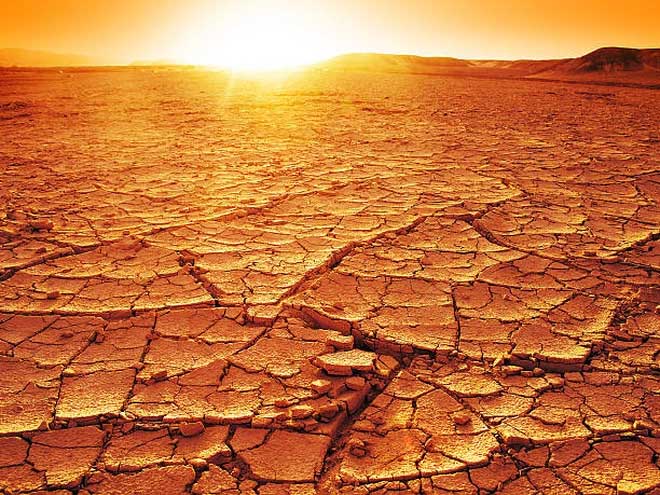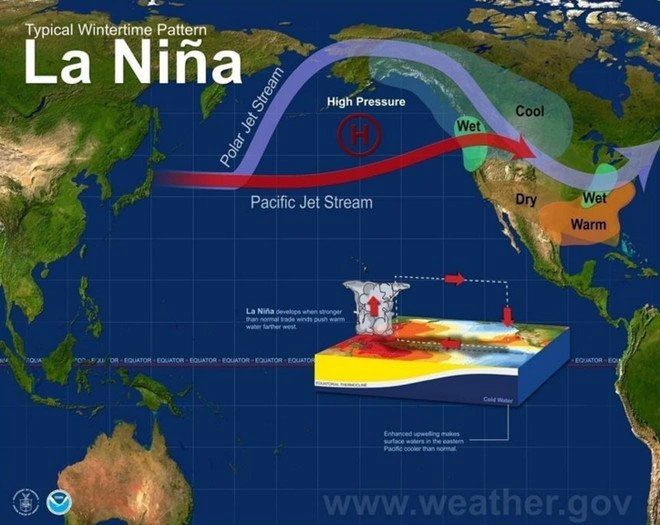Many countries around the world are enduring record-breaking heat this month, reaching “extreme” levels, and it is expected to persist for several months.
Numerous countries are experiencing a string of record-high temperatures. According to Livescience, nearly half of the states in the United States are reporting temperatures that are not only high during the day but also experiencing unprecedented warm nights in June.
At Portland International Airport, Oregon, USA, the temperature soared to 44.4 degrees Celsius on June 27, marking the highest recorded temperature since data collection began there in 1940, as reported by the National Weather Service (NWS).
Meanwhile, according to The New York Times, a “heat dome” is enveloping the entire Pacific Northwest, causing temperatures to exceed 37.7 degrees Celsius. This is considered an “extreme” level for a region that is typically unfamiliar with sweltering summer heat and air conditioning.

Inside a cooling shelter in Portland, Oregon, USA on June 27.
The United States is not the only country facing this prolonged extreme heat. Even Moscow, Russia is experiencing its hottest June since 1901.
At the same time, Canada has also recorded record-high temperatures after the area of Lytton, British Columbia, surpassed 46.1 degrees Celsius, exceeding the previous record by 1.1 degrees Celsius set in Saskatchewan in 1937.
In Mexico, record high temperatures were noted in the city of Mexicali, Baja California, where the thermometer reached 51.4 degrees Celsius, nearing the all-time national record. In Siberia, ground temperatures have occasionally hit 47.8 degrees Celsius.
In the Central Asian region, record heat and drought are causing severe water shortages and crop failures in many countries. The temperature recorded in the capital Tashkent (Uzbekistan) on June 6 was 42.6 degrees Celsius, which was 4.1 degrees Celsius higher than the previous record for that specific day set in 1811.
The capital Ashgabat (Turkmenistan) is also experiencing a June with temperatures reaching up to 45 degrees Celsius, even though summer has just begun. Typically, July and August are the hottest months of the year in Ashgabat and Central Asia in general. However, things seem to be turned upside down now.
Why is the weather getting hotter and drier?

The warming in Western countries is driven by the El Niño phenomenon.
According to Scott Handel, a meteorologist at the National Oceanic and Atmospheric Administration (NOAA), the warming in Western countries is driven by the La Niña phenomenon.
This weather phenomenon is the opposite of El Niño, which occurred throughout the winter of 2020-2021. According to scientists, La Niña typically occurs right after El Niño concludes.
Visible impacts of La Niña include causing numerous storms over the Atlantic Ocean while reducing the risk of storms in the Pacific. In the U.S., winter temperatures are warmer than usual in the Southeast but colder in the Northwest. The temperatures drop significantly, leading to severe cold snaps in affected areas.
However, during the period of La Niña, surface temperatures in the eastern Pacific are colder than normal, which tends to promote drier weather in the Western Hemisphere. Notably, this area is already accustomed to dry and hot weather and drought.

La Niña occurs on average every 3 to 5 years and affects global weather.
Connie Woodhouse, a climatologist at the University of Arizona, believes that multiple factors have caused a vast hemisphere, already suffering from prolonged drought, to be pushed closer to the “brink” due to climate change.
“According to our calculations, even if we eliminate the trend of global warming, the region will still be in a severe drought. This could be one of the worst droughts in 400 years,” Woodhouse stated.
Negative impacts on a global scale
According to a draft report from the Intergovernmental Panel on Climate Change (IPCC) of the United Nations, scheduled for release in February 2022, if the average temperature on Earth increases by 1.5 degrees Celsius – an additional 0.4 degrees Celsius from the current level, 14% of the world’s population will experience extreme heatwaves at least once every five years.
If temperatures rise by an additional 2 degrees Celsius, an additional 1.7 billion people will be at risk, the report affirms. The world has already witnessed the devastating consequences of extreme heat at much lower temperature thresholds. In 2019 alone, according to the Institute for Health Metrics and Evaluation (IHME), over 300,000 people died globally due to heat-related issues.
Gina Palma, a meteorologist at the U.S. Department of Agriculture, indicates that the immediate impact of drought will increase the risk of wildfires occurring 2 to 4 weeks earlier. It is known that the “fuels” for wildfires in nature, such as sagebrush, juniper, and pinyon pine in the U.S., are being “dried out” earlier than usual and may face the risk of igniting at any moment.
Prolonged drought also increases water demand for individuals and the agricultural sector (which accounts for 80% to 90% of total water consumption in Western countries, according to the USDA). This raises questions about how the affected areas will adapt in the future.
“As long as life continues in the western parts of North America, people will be constrained by available water resources. As water becomes scarcer, we will have to change our lifestyles to find ways to use less water,” stated Park Williams, a climatologist at UCLA.




















































